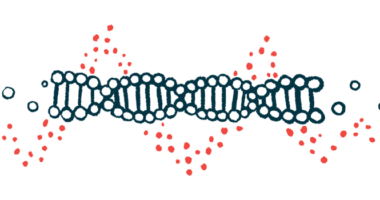Elamipretide as Add-on May Boost Efficacy of Exon-skipping Therapies

Elamipretide, an investigational therapy designed to increase the activity of mitochondria, may boost the effectiveness of exon-skipping therapies for Duchenne muscular dystrophy (DMD), its developer, Stealth BioTherapeutics, reported.
“Our new preclinical data increases our optimism that elamipretide may help address the unmet need for therapies in DMD,” Reenie McCarthy, the CEO of Stealth, said in a press release.
Mitochondria are often referred to as the “powerhouses of the cell,” because they are critical for energy generation. With specifically shaped membranes containing a number of specialized proteins, mitochondria are able to facilitate a series of chemical reactions that help to break down sugar from food and, in the process, generate the cell’s “energy currency,” called adenosine triphosphate (ATP).
Elamipretide is a peptide, or small protein chain, that is able to easily enter cells and bind to cardiolipin, a fatty substance found in mitochondrial membranes. By binding to cardiolipin, elamipretide is thought to help stabilize the membranes’ structure, which in turn increases the activity of the mitochondria.
Scientists at Stealth conducted a series of experiments in a mouse model of X-linked muscular dystrophy, meaning muscular dystrophy that is caused by mutations on the sex-determining X-chromosome (females have two X chromosomes, males have one X and one Y). DMD is caused by mutations in the X-linked gene DMD, which codes for a protein called dystrophin.
Mice were treated with an exon-skipping therapy, a class of therapies approved for the treatment of DMD caused by specific mutations. Exon-skipping therapies work by prompting the cell to “skip over” the mutated section of DNA when a gene is “read,” allowing the production of a shortened but still functional version of the dystrophin protein.
Results showed that co-treatment with elamipretide and an exon-skipping therapy (based on a phosphorodiamidate morpholino oligomer, or PMO) boosted dystrophin levels in the animals’ muscle cells by nearly twice that of the exon-skipping therapy alone. According to Stealth, this increase in activity likely is due to better mitochondrial function, which allows the exon-skipping therapy to be retained in cells for longer, making it more effective. Additional studies are ongoing.
The company is planning to meet with the Division of Cardiology and Nephrology (DCN) — a part of the U.S. Food and Drug Administration (FDA) — later this month to discuss these findings. Stealth recently met with the DCN regarding its plans for elamipretide in treating Barth syndrome, a genetic condition that leads to mitochondrial dysfunction.
“We look forward to discussing our development plan with DCN later this month following our recent constructive meeting on our Barth program,” McCarthy added.







